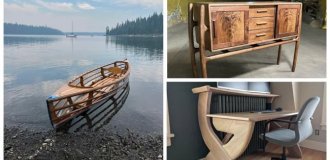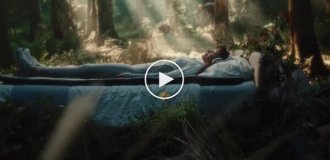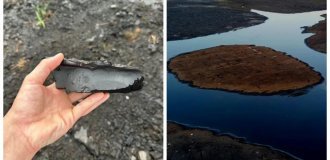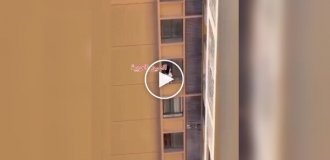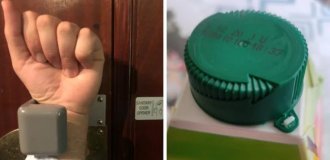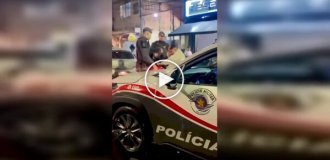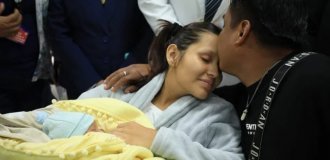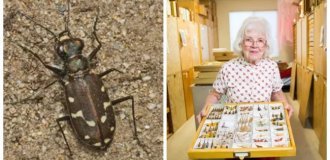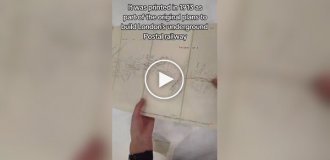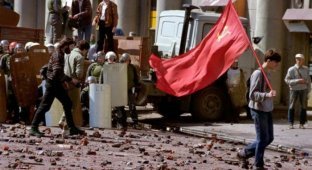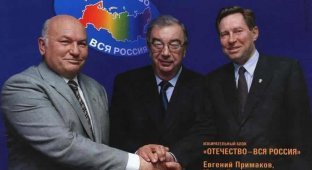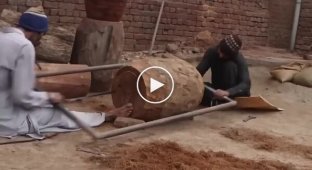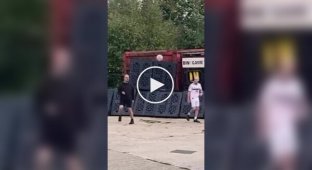The beginning of the 90s was a difficult time for Russia, however, then everyone hoped for the best. Using the legacy of the USSR, people gradually began to switch to market relations, however, not everyone succeeded. This post will tell and show how residents of various Russian cities lived in the first years after the collapse of the USSR.

Residents of Vladivostok's former "Chinatown", Millionka, expressed their gratitude to Mayor Evgeny Blinov with graffiti.

Flea market on the street Leninskaya, Vladivostok, 1993.

Vladivostok, passage, 1993. The tricolor has already become part of the design of shop windows.

Queue at a telephone booth. Vladivostok, 1992.

On the central square of Vladivostok, 1991.

August '91. In those days there were rallies against the State Emergency Committee in all major cities.

Shuttles. A necessary and respected profession when there is neither international trade nor domestic production of consumer goods, especially clothing and footwear, on the scale required by the country.

If in the 80s religion timidly rose from its knees, then in the 90s it rose to its full height. Churches were restored and reopened in the country, and priests began to participate in public life. The photo shows an Orthodox cross in Birch Grove, which was installed in honor of the centenary of the city of Makarov (Sakhalin).

Near the Khabarovsk station, 1991

People's Assembly in Susuman (Magadan region). In the early 90s, 18 thousand people lived here, now about five remain.

Young cyclists on Sovetskaya Street in Susuman. There were no Chinese bicycles in the early 90s; everyone rode old Soviet ones.

The fashionable name for the store in the 90s was “Prestige”. This time in Yakutsk, on Lenin Avenue, next to the Soviet “Subscription Editions” store.

Street stalls of the central market of Ulan-Ude. In most cities there was such a thing as “market day”. I don’t know about Ulan-Ude, but often it was Thursday and Sunday, Saturday was considered “semi-market”. If it was not a market day, then many of the stalls were empty, although the pavilions were almost always open during the day.

Video room on Uritsky street in Irkutsk. Video rooms, also known as “vidyushniks,” were intended for public viewing of VHS tapes. Essentially, these were mini-cinemas with films that were not in wide release. They usually specialized in action films and erotica (and sometimes just porn), some in cartoons. They say that at one time there were even video rooms on long-distance trains. By the mid-90s, video cameras appeared in most Russian families - this was a sign of growing wealth compared to the beginning of the decade, which was customary to demonstrate to relatives and neighbors. Many videotapes, even if they were homemade, could be bought on the market, so video halls gradually died out.

City Day in Zheleznogorsk (ZATO), 1993

Supermarket "Kantat", Zheleznogorsk. A Coca-Cola advertisement has already appeared.

House of Life "Baltiysky", fashion of those years. People have already been gradually taught to smile, at least for anniversary albums.

Central market of Novokuznetsk, 1991. Two years earlier, everything was much darker.

Banks and insurance companies popped up like mushrooms after rain. Victoria Insurance Company is advertised on the wall of the Central Hotel in Barnaul, 1992.

Maslenitsa at the Palace of Arts in Nizhnevartovsk, 1993.

Churches are starting to function again in many cities. In 1991, the bell was installed in the bell tower of St. Nicholas Cathedral in Omsk.

Not just a market, but an open joint stock company. Omsk in the 90s.

The same Leninsky market.

Tyumen Society for Krishna Consciousness. During the visit of Prabhavishnu Swami, Harinama, the city even blocked traffic on the street. Republic.

Hare Krishnas on the square near the Yubileiny Theater (now the Tyumen Drama Theater).

The station advertises the stock exchange.

Days of Kazakh culture in Tyumen, 1992. There are yurts set up near the Philharmonic.

The Maria shopping center got its name in honor of the director of Sverdlovsk supermarket No. 1, Maria Vdovina. Ekaterinburg, 1993.

Communism is being chopped off from the building of the Sverdlovsk Regional Committee. August '91.

Rally against the putschists on the 1905 square. August '91, Sverdlovsk.

Who knew then that the fashion for jeans and high-waisted shorts would return again in 20 years... Lenin Avenue, Yekaterinburg, 1992

Signs of the market: a restaurant and leather jackets... Izhevsk, Pastukhov Square, 1993.

Many public spaces were overgrown with grass... Stage on the street 30 years of Victory in Izhevsk, 1991-1992.

Traders at the collective farm market in Kazan still used horse-drawn transport.

Despite the crisis of the early 90s, urban transport was produced. Brand new trolleybuses at the Plant named after. Uritsky in Engels.

There were also rallies against the putschists in Volgograd.

Aeraria on the Riviera beach in Sochi.

Procession of the cross in Voronezh at the reopened Church of the Assumption of the Blessed Virgin Mary. In the background, the building of the Voronezh Theological Seminary is already under construction.

In 1993, a monument to General Chernyakhovsky was erected in Voronezh, brought from Vilnius, where it was dismantled immediately after the collapse of the USSR. In Voronezh, the general was installed on the square, named in his honor back in 1949, and local residents greeted him with a solemn rally.

Just Garry Kasparov in Tula. Also a chess player.

Finding the relics of St. Seraphim of Sarov. Alexy II, elected patriarch back in 1990, leads the procession. Nizhny Novgorod, August 1, 1991.



However, in the 90s, Nizhny Novgorod gained not only power, but also a new trolleybus line, which was built since 1987 and connected Minin Square with Verkhniye Pechery.

Even then there were route bus stops in the city.

Shop "Petushok" in Tver. Excerpt from a note in the magazine "Ogonyok": "On Uritsky Street, usually attacked by people, "Cockerel" is free, quail eggs, apparently, are not in demand." By the way, in 1992 the street’s historical name was returned. Now this is Trekhsvyatskaya Street, and it is pedestrian.

Central market of Petrozavodsk. In the background you can see some kind of sign in Finnish.

Shopping row with flowers. Seat boxes were an indispensable attribute of any market of those years.

Disney characters wish happiness to the children of Petrozavodsk. Cinema "Pobeda", August 1991.

The first President of Russia Boris Yeltsin on the submarine K-456 "Kasatka", which was built at the Sevmash plant in Severodvinsk and commissioned in 1992. Now the cruiser (in 2011 renamed "Tver") is part of the Pacific Fleet .

Signs of the market continued to appear. A tavern in the Gatchina district of the Leningrad region, 1991.

Fading black marketeers at the Beryozka store on Vasilievsky Island in (then) Leningrad, 1991.

Leningraders-St. Petersburg (the city returned its historical name on September 6, 1991, but the law came into force the following year, 1992) meet Peter I in the Peter and Paul Fortress.

Cafe-bar moored to Hare Island.

Tourist bus Bristol Lodekka on St. Isaac's Square. They stopped producing them back in 1968.

Barricade of trolleybuses on St. Isaac's Square.

In August 1991, St. Petersburg also actively rallied. The city's revolutionary past taught people to build barricades. These are near the Leningrad City Council building.

Peter against the State Emergency Committee.

Rally at the Leningrad City Council (Mariinsky Palace).

Rising star of democracy.

The rising star of democracy.

Dvortsovaya was much more crowded.


Slogans of democracy.

Balloons on Dvortsovaya.

The line at the grocery store on the corner of Sadovaya and Gorokhovaya.

Crowd on Sennaya. From the comments: “On the fence you can see the remains of advertisements for the exchange of living space, there was a huge crowd of people wanting to exchange housing.”

Public transport was sometimes free.

Art center "Borey" on Liteiny, created in 1991. Quote from the site: “Borey is a civil initiative brought to life by a group of like-minded people whose goal is to build a house of culture, the doors of which are open to artistic initiatives.”

On the box is the inscription North State - this was a brand of cigarettes from the British company British American Tobacco.

Near the Sennaya metro station, 1992. From the comments: “About this time, the first shawarma appeared here in St. Petersburg. The queue at the stall was about 50 people. Shawarma was new.” Let me reassure Muscovites: it is correct, of course, to say “shawarma”.

Sennaya

A typical popular nickname for stores in the mid-80s and mid-90s was “glass.” This one was located on Lunacharsky Avenue. St. Petersburg, 1992.

Private trade near the Vladimirskaya metro station.

Lenin's last days at the Moskovsky railway station in St. Petersburg. In 1993 it was replaced by Peter I.

Near Udelnaya metro station, 1993.

Amber traders in Kaliningrad. In the background are monuments of two eras, Prussian and Soviet. The Koenigsberg Cathedral began to be restored in 1992 and was restored, although far from its original form. And the House of Soviets remains unfinished.


